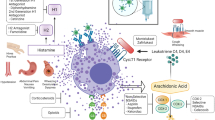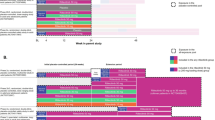Abstract
Serious dermatologic adverse events such as erythema multiforme (EM) and Stevens-Johnson syndrome/toxic epidermal necrolysis (SJS/TEN) have been reported in patients receiving antiepileptic drugs (AEDs) and cranial radiotherapy (RT). Given the frequency of AED-associated rashes and the infrequency of serious dermatologic adverse events after cranial RT, we sought to further assess the prevalence of cutaneous eruptions in patients receiving an AED before and after cranial RT. We reviewed medical records of patients taking AEDs while undergoing RT for a high-grade glioma and recorded demographic, disease, and treatment parameters, as well as the development of rashes. Rashes were found in 19 % of patients taking AEDs. Phenytoin was most commonly implicated (93 %) in rash formation compared with other AEDs (P < 0.0001), both before and during RT. Most rashes (76 %) occurred before starting RT (P < 0.0001). However, of those during RT, most were associated with phenytoin compared with other AEDs (P = 0.002). One case of SJS was noted in a patient receiving phenytoin prior to RT. While rashes were slightly less prevalent in patients receiving temozolomide compared with those not receiving temozolomide (3.4 vs 4.8 %), this difference was not statistically significant (P = 0.65). Rashes are relatively common in patients receiving AEDs, with the highest incidence associated with phenytoin. However, the risk of serious dermatologic events is low. There did not appear to be an association between the receipt of cranial radiotherapy and the development of AED-associated rash with phenytoin or other AEDs.
Similar content being viewed by others
References
Weller M, Stupp R, Wick W (2012) Epilepsy meets cancer: when, why, and what to do about it? Lancet Oncol 13:e375–e382
Patel TR, Knisely JP, Chiang VL (2012) Management of brain metastases: surgery, radiation, or both? Hematol Oncol Clin North Am 26:933–947
Roujeau JC (1994) The spectrum of Stevens-Johnson syndrome and toxic epidermal necrolysis: a clinical classification. J Invest Dermatol 102:28–30
Fitzgerald TJ, Jodoin MB, Tillman G, Aronowitz J, Pieters R, Balducci S, Meyer J, Cicchetti MG, Kadish S, McCauley S, Sawicka J, Urie M, Lo YC, Mayo C, Ulin K, Ding L, Britton M, Huang J, Arous E (2008) Radiation therapy toxicity to the skin. Dermatol Clin 26:161–172
Delattre JY, Safai B, Posner JB (1988) Erythema multiforme and Stevens-Johnson syndrome in patients receiving cranial irradiation and phenytoin. Neurology 38:194–198
Rzany B, Correia O, Kelly JP, Naldi L, Auquier A, Stern R (1999) Risk of Stevens-Johnson syndrome and toxic epidermal necrolysis during first weeks of antiepileptic therapy: a case-control study. Study group of the international case control study on severe cutaneous adverse reactions. Lancet 353:2190–2194
Ahmed I, Reichenberg J, Lucas A, Shehan JM (2004) Erythema multiforme associated with phenytoin and cranial radiation therapy: a report of three patients and review of the literature. Int J Dermatol 43:67–73
Micali G, Linthicum K, Han N, West DP (1999) Increased risk of erythema multiforme major with combination anticonvulsant and radiation therapies. Pharmacotherapy 19:223–227
Aydogan K, Vatansever S, Adim SB, Saricaoglu H (2010) Empact syndrome: a case report and review of the literature. Int J Dermatol 49:945–949
Fabbrocini G, Panariello L, Pensabene M, Lauria R, Matano E, Martellotta D, Bianca D, De Placido S, Ayala F (2013) EMPACT syndrome associated with phenobarbital. Dermatitis 24:37–39
Vern-Gross TZ, Kowal-Vern A (2012) Erythema multiforme, Stevens Johnson syndrome, and toxic epidermal necrolysis syndrome in patients undergoing radiation therapy: a literature review. Am J Clin Oncol
Goyal S, Biswas A, Puri T, Mohanti BK (2010) Stevens-Johnson syndrome following concurrent phenytoin and holocranial radiotherapy. Acta Oncol 49:259–260
Oner Dincbas F, Yoruk S, Demirkesen C, Uzel O, Koca S (2004) Toxic epidermal necrolysis after cranial radiotherapy and phenytoin treatment. Onkologie 27:389–392
Eralp Y, Aydiner A, Tas F, Saip P, Topuz E (2001) Stevens-Johnson syndrome in a patient receiving anticonvulsant therapy during cranial irradiation. Am J Clin Oncol 24:347–350
Chung WH, Hung SI, Yang JY, Su SC, Huang SP, Wei CY, Chin SW, Chiou CC, Chu SC, Ho HC, Yang CH, Lu CF, Wu JY, Liao YD, Chen YT (2008) Granulysin is a key mediator for disseminated keratinocyte death in Stevens-Johnson syndrome and toxic epidermal necrolysis. Nat Med 14:1343–1350
Hu FY, Wu XT, An DM, Yan B, Stefan H, Zhou D (2011) Phenytoin-induced Stevens-Johnson syndrome with negative HLA-B*1502 allele in mainland China: two cases. Seizure 20:431–432
Man CB, Kwan P, Baum L, Yu E, Lau KM, Cheng AS, Ng MH (2007) Association between HLA-B*1502 allele and antiepileptic drug-induced cutaneous reactions in Han Chinese. Epilepsia 48:1015–1018
Mauri-Hellweg D, Bettens F, Mauri D, Brander C, Hunziker T, Pichler WJ (1995) Activation of drug-specific CD4+ and CD8 + T cells in individuals allergic to sulfonamides, phenytoin, and carbamazepine. J Immunol 155:462–472
Basaran N, Hincal F, Kansu E, Ciger A (1994) Humoral and cellular immune parameters in untreated and phenytoin-or carbamazepine-treated epileptic patients. Int J Immunopharmacol 16:1071–1077
Tubiana M (1981) Does post-operative radiotherapy faclitate metastatic disseminations? In: Dubois JB, Serrouo B, Roseneld C (eds) Immunopharmacologic basis of radiation therapy. Raven Press, New York, pp 399–414
Gaber MW, Sabek OM, Fukatsu K, Wilcox HG, Kiani MF, Merchant TE (2003) Differences in ICAM-1 and TNF-alpha expression between large single fraction and fractionated irradiation in mouse brain. Int J Radiat Biol 79:359–366
Mockenhaupt M (2011) The current understanding of Stevens-Johnson syndrome and toxic epidermal necrolysis. Expert Rev Clin Immunol 7:803–815
Teraki Y, Shibuya M, Izaki S (2009) Stevens-Johnson syndrome and toxic epidermal necrolysis due to anticonvulsants share certain clinical and laboratory features with drug-induced hypersensitivity syndrome, despite differences in cutaneous presentations. Clin Exp Dermatol 35:723–728
Musio D, Parisi E, Dionisi F (2009) Irradiated fields spared Stevens-Johnson syndrome in a patient undergoing radiotherapy for bone metastases. Jpn J Radiol 27:103–106
Sanz A, Del Valle M (2005) A man whose scapula was spared a drug-associated rash. Can Med Assoc J 15:745
Mitra SS, Simcock R (2006) Erlotinib induced skin rash spares skin in previous radiotherapy field. J Clin Oncol 24:e28–e29
ACR Committee on Drugs and Contrast Media (2013) ACR Manual on Contrast Media, Version 9. http://www.acr.org/~/media/ACR/Documents/PDF/QualitySafety/Resources/Contrast%20Manual/2013_Contrast_Media.pdf
Acknowledgments
MC was supported by the Medical Student Summer Fellowship Research Program by the Brain Tumor Center at Memorial Sloan-Kettering Cancer Center.
Conflict of interest
None.
Author information
Authors and Affiliations
Corresponding author
Electronic supplementary material
Below is the link to the electronic supplementary material.
Rights and permissions
About this article
Cite this article
Bishop, A.J., Chang, M., Lacouture, M.E. et al. EMPACT syndrome: limited evidence despite a high-risk cohort. J Neurooncol 119, 129–134 (2014). https://doi.org/10.1007/s11060-014-1457-7
Received:
Accepted:
Published:
Issue Date:
DOI: https://doi.org/10.1007/s11060-014-1457-7




